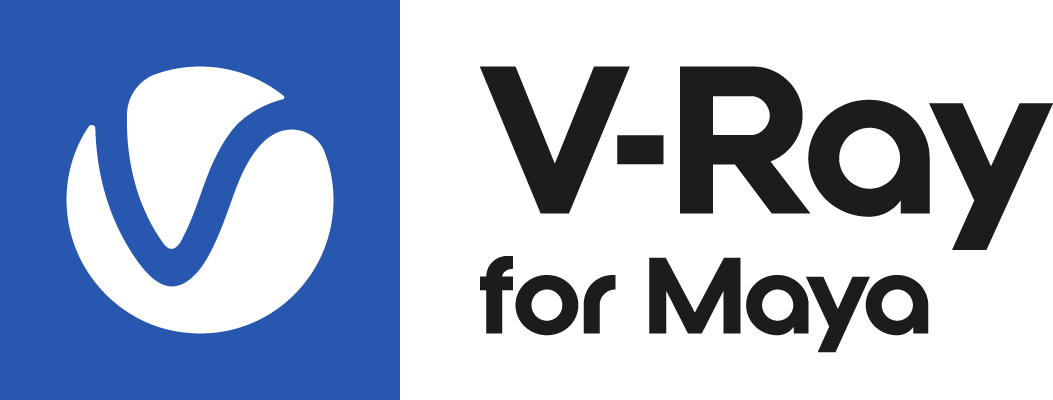This page provides some details on the settings available for the Fast SSS Material in V-Ray.
Overview
VRayFastSSS2 is a material primarily designed for rendering translucent materials like skin, wax, marble, etc. The implementation is based on the concept of BSSRDF originally introduced by Jensen et al. (see the references below). It is an approximation of the sub-surface scattering effect observed in the physical world, while still being fast enough to be used in practice.
VRayFastSSS2 is a complete material with diffuse and reflection components that can be used directly without the need of a VRayBlendMtl material. To be more specific, the material is composed of three layers: a reflection layer, a diffuse layer, and a sub-surface scattering layer. The sub-surface scattering layer is comprised of single and multiple scattering components. Single scattering occurs when light bounces once inside the material. Multiple scattering results from light bouncing two or more times before leaving the material.
Image courtesy of Antone Magdy
General Parameters
Diffuse and Sub-Surface Scattering Layers Parameters
Example: Sub-Surface Color
This example and the next demonstrate the effect of and the relation between the Scatter color and the Sub-surface color parameters. Note how changing the Sub-surface color changes the overall appearance of the material, whereas changing the Scatter color only modifies the internal scattering component.
The Scatter color is set to beige.
Example: Scatter Color
The Sub-surface color is white.
Example: Scatter Coefficient
This example demonstrates the effect of and the relation between the Scatter Coefficient and the Fog color parameters when the Scatter Mode is set to Scatter Coefficient and Fog Color. The Fog color is set to white for all the images.
Example: Fog Color
This example demonstrates how Fog Color works together with the Scatter Coefficient color. The Scatter Coefficient color is white for all the images.
Example: Scatter Radius and Scale
This example shows the effect of the Scatter radius and Scale parameters. Note how increasing them allows the inside (Scatter coefficient) color to show up more and leads to a softer look.
Example: Phase Function
This example shows the effect of the Phase function parameter. This parameter can be likened to the difference between diffuse reflection and glossy reflection on a surface. However, it controls the reflectance and transmittance of a volume. Its effect is quite subtle, and mainly related to the single scattering component of the material.
Phase function = -0.5 (Backward Scattering)
Phase function = 0 (Isotropic Scattering)
Phase function = 0.5 (Forward Scattering)
The red arrow represents a ray of light going through the volume; the black arrows represent possible scattering directions for the ray.
Example: Phase Function: Light Source
This example demonstrates the effect of the Phase function parameter when there is a light source inside the volume. The material uses Color mode: Scatter coefficient and fog color, large Scatter radius and Single scatter: Raytraced (Refractive).
Phase function = -0.9
Phase function = 0.0
Phase function = 0.7
Specular Layer Parameters
Options
Example: Single Scatter Mode
This example shows the effect of the Single scatter mode parameter.
For relatively opaque materials, the different Single scatter modes produce quite similar results (except for render times). In the following set of images, the Scatter radius is set to 1.0 cm.
In the second set of images, the Scatter radius is set to 50.0 cm. In this case, the material is quite transparent, and the difference between the different Single scatter modes is apparent. Note also the transparent shadows with the Raytraced (refractive) mode.
Bump and Normal mapping
References
Here is a list of references used when building the VRayFastSSS2 material.
- H. C. Hege, T. Hollerer, and D. Stalling, Volume Rendering: Mathematical Models and Algorithmic aspects
An online version can be found at http://www.cs.virginia.edu/~jdl/bib/appearance/subsurface/donner05.pdf (This link is no longer accessible.)
Defines the basic quantities involved in volumetric rendering and derives the volumetric and surface rendering equations. - [2] T. Farrell, M. Patterson, and B. Wilson, A Diffusion Theory Model of Spatially Resolved, Steady-state Diffuse Reflectance for the Noninvasive Determination of Tissue Optical Properties in vivo , Med. Phys. 19(4), Jul/Aug 1992
Describes an application of the diffusion theory to the simulation of sub-surface scattering; derives the base formulas for the dipole approximation used by Jensen et al. (see below). - H. Jensen, S. Marschner, M. Levoy, and P. Hanrahan, A Practical Model for Subsurface Light Transport, SIGGRAPH'01: Computer Graphics Proceedings, pp. 511-518
An online version of this paper can be found at http://www-graphics.stanford.edu/papers/bssrdf/
Introduces the concept of BSSRDF and describes a practical method for calculating sub-surface scattering based on the dipole approximation derived by Farrell et al. (see above). - H. Jensen and J. Buhler, A Rapid Hierarchical Rendering Technique for Translucent Materials, SIGGRAPH'02: Computer Graphics Proceedings, pp. 576-581
An online version of this paper can be found at http://graphics.ucsd.edu/~henrik/papers/fast_bssrdf/
Introduces the idea of decoupling the calculations of surface illumination and the sub-surface scattering effect in a two-pass method; describes a fast hierarchical approach for evaluating subsurface scattering and proposes a reparametrization of the BSSRDF parameters for easier user adjustment. - C. Donner and H. Jensen, Light Diffusion in Multi-Layered Translucent Materials, SIGGRAPH'05: ACM SIGGRAPH 2005 Papers, pp. 1032-1039
An online version of this paper can be found at https://sites.cs.ucsb.edu/~holl/pubs/hege-1993-vrm.pdf
Provides a concise description of the original BSSRDF solution method presented by Jensen et al; extends the model to multi-layered materials and thin slabs using multipole approximation.










































